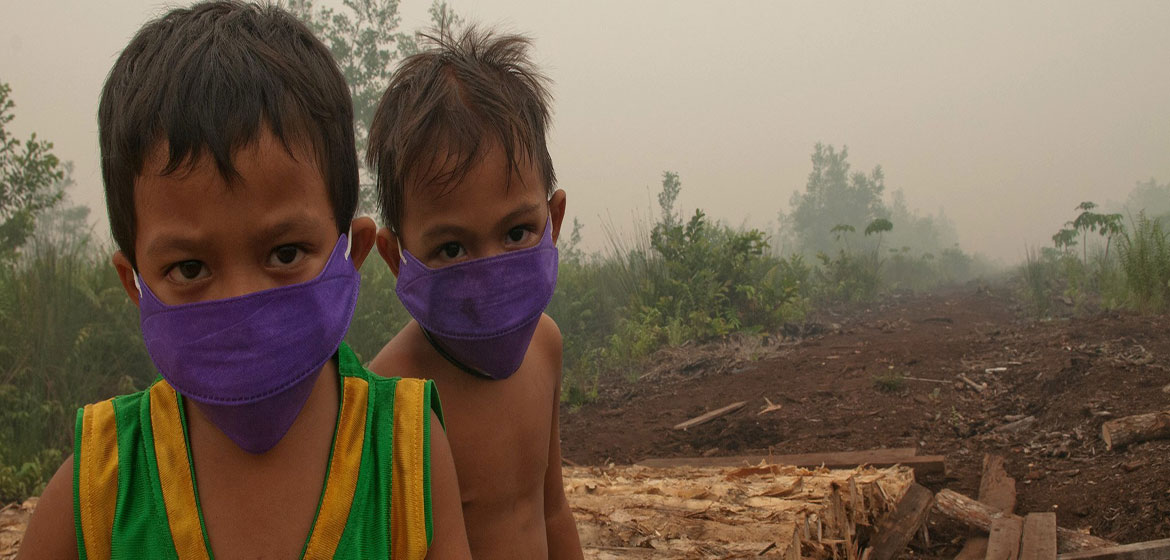By Augusta Dwyer
UN Environment released its sixth and latest Global Environment Outlook (GEO-6) at the beginning of March, and it’s a grim read. For instance, here are a few main takeaways:
- Between 6 and 7 million people are dying premature deaths every year thanks to pollution, with air pollution being the biggest contributor.
- Both ecosystem functionality and integrity – defined as the ability to maintain processes in the face of change – are declining, with ten out of every 14 terrestrial habitats seeing a decrease in vegetation productivity.
- Marine litter is pervasive, found in all oceans and at all depths, while water quality in most regions of the world has worsened significantly since 1990 because of organic and chemical pollution.
- Wildlife is disappearing. Between 1970 and 2014, global populations of vertebrate species declined by an average of 60 percent. What’s more, 42 percent of terrestrial invertebrates, 34 percent of freshwater invertebrates and 25 percent of marine invertebrates are currently deemed at risk of extinction.
Details like these (and there are plenty more where they came from) seem to show that humans are right on track to destroying the planet and endangering our own lives. For Pierre Boileau, Head of the Global Environment Outlook program, however, the report is not without hope.
“We do present a path forward,” he says. “There is a brighter future down those pathways, but they do require quite a substantial rethink of how we currently do our business, economies, development, all of that.
“Yes, the story is bleak,” he added, “but the picture was bleak in GEO-5 and GEO-4. And now we have two-thirds of the report that talks about solutions rather than how bleak things are.”
The report’s authors are hoping that their high-level audience is not only environment ministers but also other government decision-makers in areas of energy, agriculture and finance. “We need integrated policies,” says Boileau, “and ministries that work together on policies that address big systems and not just individual issues one by one. Otherwise we will never get to the objective of a sustainable world by 2050.”
The GEO’s focus on human health is a good example of that. In addition to addressing the high number of premature deaths caused by environmental pollution, the vast majority of them from fine particulate matter in the air, the report also warns that pollutants in freshwater systems will see anti-microbial resistance become a major cause of death by 2050. Endocrine disruptors from these pollutants will further impact male and female fertility as well as child neurodevelopment.
The report offers data on both gains and remaining problems. For example: despite a decline in the proportion of households using solid fuels indoors, 3 billion people worldwide still “depend on burning fuels such as wood, coal, crop residue, dung and kerosene for cooking, heating and lighting,” according to the report. And while 1.5 billion people have gained access to basic water services, an estimated 1.4 million people still die each year from preventable diseases associated with pathogen-polluted drinking water and inadequate sanitation.
The focus on health in the GEO-6 was something decided on by member states, says Boileau. “We wanted to be able to make the link between the environmental impact we’re seeing and the ultimate impact on humans, and there’s a lot more research now on that link.”
“The hope is that by showing how closely linked the environment and human health are that it may have a policy effect in that health ministries might start taking more of an interest in the environment,” says Paul Ekins, GEO-6 assessment co-chair. “And because we spend so much money on health, it’s also possible that finance ministers will start taking more interest in the environment too.”
The report also points out that those countries that do prioritize low-carbon, resource-efficient practices may well gain a competitive advantage in the global economy. “Well-designed environmental policies and appropriate technologies and products can often be implemented in tandem at limited or no cost to growth and competitiveness and can expand the capacity of countries to develop and diffuse innovative technologies,” it states. “That may be positive for employment and development, while reducing greenhouse gas emissions and, ultimately, facilitating sustainable development.”
Reforestation, such as that called for by the , a global effort to bring 350 million hectares of deforested and degraded land into restoration by 2030, is one example of that. “Reforestation is not only a strong mitigation tool, it’s an absolutely essential one,” says Ekins. “If you can restore degraded land, you get multiple wins. Feed more people, or sequester more carbon, or reduce the pressure on highly biodiverse forests for agriculture – and probably a combination of all three.”
Says Boileau: “Our positive message is, if we manage to do this transformational change, there is a lot of opportunity in that transformational change.”
He likens the current situation to that which faced the Canadian company RIM, producer of the Blackberry smartphone, when confronted some 10 years ago with the introduction of Apple’s iPhone.
“You saw a whole bunch of arguments saying ‘our business model is fine, nothing is going to happen, we’re still going to be the number-one seller of smartphones in the world,’” he says. “I’m hoping that this report is an iPhone moment, where somebody’s going to say ‘no, it’s really not fine. We’ve got to make a change.’”
Source:
Related to SDG 3: Good health and well-being



